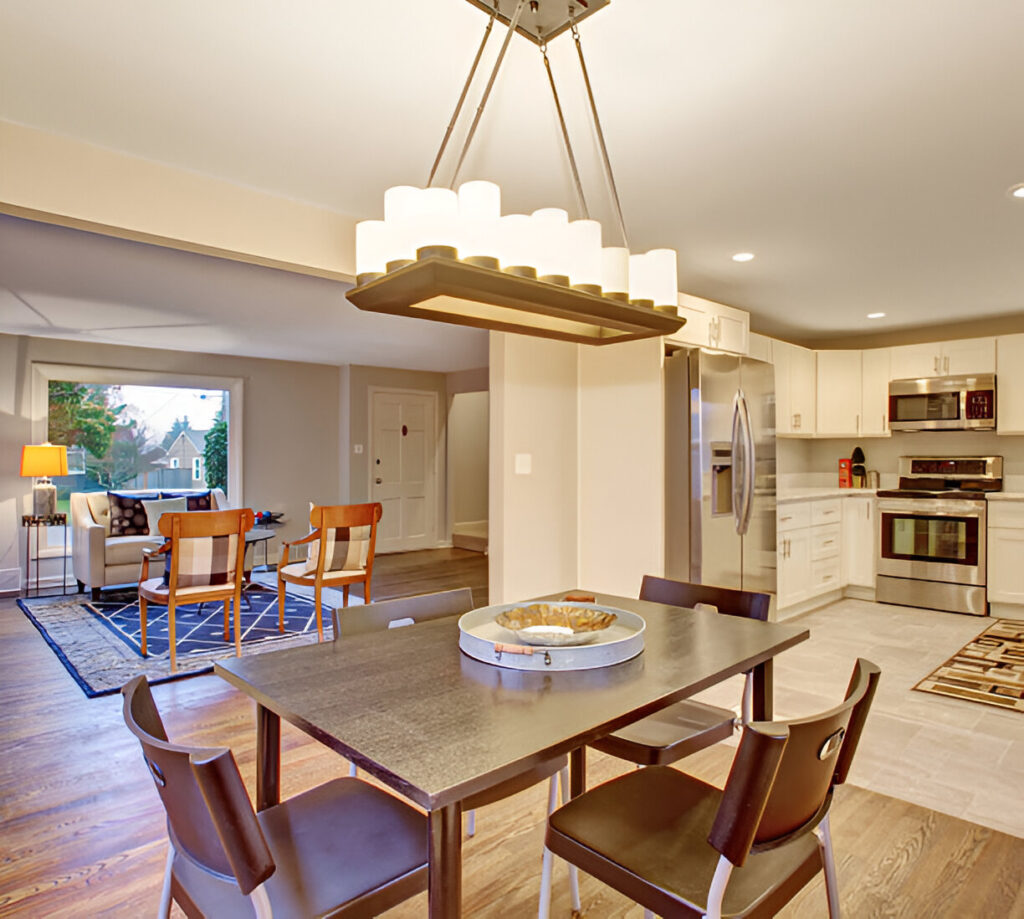Appropriate lighting can significantly alter the appearance and atmosphere of a room, particularly in kitchens and dining spaces, where practicality merges with ambience. Whether you’re cooking up a casual dinner or entertaining guests for a special occasion, careful lighting design can elevate the mood and experience of your environment. Below are some useful lighting suggestions that can enhance the atmosphere during mealtimes.
Contents
1. Layer Your Lighting
Relying solely on a single ceiling fixture can lead to inconsistent or harsh illumination. Instead, incorporate layers to achieve a balance between aesthetics and functionality. Begin with ambient lighting for general light distribution, which may include recessed ceiling fixtures or flush-mounted lights. Next, introduce task lighting—such as under-cabinet strips or pendant lamps—to illuminate specific areas like countertops and islands. Lastly, use accent lighting to emphasize architectural features or artwork, adding depth and personality to the space.
2. Choose the Right Bulb Temperatures
Light bulb color temperature plays a major role in setting the tone. For kitchens, cooler white light (around 4000K–5000K) can mimic natural daylight and improve visibility while cooking. For dining areas, warmer tones (2700K–3000K) create a cozy, welcoming environment that encourages people to relax and linger. Dimmer switches can be particularly useful, allowing you to adjust brightness based on the time of day or occasion.
3. Highlight the Dining Table
In dining rooms, the table is the centerpiece—make it shine. A statement chandelier or a row of pendant lights positioned above the table can add both style and targeted illumination. Ideally, the fixture should hang 30–36 inches above the table surface, offering enough light without overwhelming the space. Consider dimmable options for added versatility.
4. Mix Materials and Styles
Lighting fixtures can be a design statement in themselves. Mix materials like glass, metal, or rattan to introduce texture and contrast. Whether your home has a contemporary, rustic, or classic look, there’s a wide range of styles to suit your taste. Matching finishes with cabinet hardware or dining furniture can create a cohesive feel.
5. Don’t Forget the Practical Side
While ambiance is important, kitchens also need bright, functional lighting. Make sure prep areas are welllit, especially around the stove, sink, and island. Installing LED strips under cabinets or above open shelving can be a simple and effective solution. To make sourcing your components easier, shop from trusted providers of wholesale electrical supplies in Sutton in the UK, who offer both quality and variety.
6. Embrace Natural Light When Possible
During daylight hours, natural light can dramatically enhance your kitchen and dining area. Maximize it by keeping windows clear of heavy drapes and choosing light-reflective surfaces for countertops and backsplashes. Strategically placing mirrors can also bounce sunlight deeper into the room.
7. Stay Energy Efficient
Opt for energy-efficient LED bulbs wherever possible. They not only use less power but also last significantly longer than traditional bulbs. Smart lighting systems can add another layer of control, letting you set scenes or adjust lighting remotely.
Final Thoughts
Lighting transcends mere visibility; it weaves a rich tapestry of atmosphere, function, and style. By masterfully layering various lighting sources and homing in on every meticulous detail, you can transform your kitchen and dining area into a harmonious blend of practicality and beauty. The outcome? An inviting mealtime haven that exudes warmth and charm, making every meal not just a feast for the palate, but a celebration for the senses.



